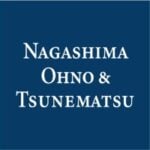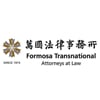-
What are the main methods of resolving disputes in your jurisdiction?
Litigation and Arbitration are both formal methods of settling business disputes in the Peruvian justice system. The Peruvian Constitution recognises arbitration and judicial activity as manifestations of jurisdiction (understood as the exercise of the State’s power and duty to settle disputes) and as means of dispute resolution.
Given the volume of disputes, the main settlement mechanism is litigation before the ordinary courts. However, for several years now, arbitration has been the means used to resolve major disputes, including at the state level (disputes in public procurement, concession contracts, expropriations for infrastructure development, among others).
Conciliation is also recognised as a means of dispute resolution. It is even a prerequisite for access to ordinary jurisdiction in civil and commercial disputes. However, despite its obligatory nature, it is not a mechanism that has led to a decrease in disputes at the judicial level.
-
What are the main procedural rules governing litigation in your jurisdiction?
The main procedural norms are the Constitutional Procedural Code, the Civil Procedural Code, the Law regulating Contentious-administrative Processes and the Legislative Decree regulating Arbitration. The first applies to constitutional proceedings (unconstitutionality; habeas corpus; summary proceedings which serve to guarantee constitutional rights; compliance; habeas data; and popular actions); the second, to almost all private law disputes; the third, to challenges against state actions under public law; and, the last one, to matters which, by law, are subject to arbitration.
-
What is the structure and organisation of local courts dealing with claims in your jurisdiction? What is the final court of appeal?
The state body in charge of resolving commercial disputes is the Judiciary. It has a hierarchical structure that distinguishes between first- and second-degree bodies; and, depending on the amount and subject matter in dispute, the dispute could be heard by the Supreme Court, through an extraordinary appeal called cassation [repeal or nullification of a court decision made by the highest courts of the nation, exclusively on substantive ground of interpreting and applying the law].
Depending on different criteria for allocating jurisdiction (including the subject matter and/or the amount of the claim), the proceedings could be heard, at first instance, by either a Court of the Peace or a specialised court. If a Justice of a Court of Peace ruled in the first instance, a specialized court will rule in the second instance, and its ruling will end the proceedings.
On the other hand, if it was a specialised court that ruled in the first instance, a higher court will act as a second instance court. In this scenario, in the event that one of the parties lodges an appeal in cassation, the appeal will be decided by the Supreme Court.
Finally, it is important to mention that the Supreme Court does not act as an additional instance, so the discussion that arises there does not refer to matters of a factual nature. The function of the Supreme Court is, rather, to verify that the objective material or procedural law to the concrete case is correctly applied; and, with this, to standardise the jurisprudence at national level.
-
How long does it typically take from commencing proceedings to get to trial in your jurisdiction?
A commercial court proceeding begins with the filing of a lawsuit; and, after the entire process has been completed, a final ruling can be obtained that terminates the proceeding in approximately four years.
As a prerequisite, depending on the subject matter of the dispute, it may be necessary to exhaust an out-of-court conciliation procedure. This procedure lasts approximately fifteen (15) working days.
In the case of arbitration proceedings, no prior out-of-court conciliation procedure is required. However, it is possible that the parties may have agreed on a prior direct-dealing stage. Should this be the case, the direct dealings will be conducted in accordance with the procedure and deadlines set out in the agreement adopted by the parties.
Furthermore, depending on the terms of the arbitration agreement, it is understood that the arbitration process is deemed to commence from the date on which one of the parties submits a communication to the other party, expressing its intention to initiate arbitration. The duration of an arbitration process is approximately one year.
-
Are hearings held in public and are documents filed at court available to the public in your jurisdiction? Are there any exceptions?
Hearings are public, with the exception of those that may involve minors (persons under the age of eighteen), or where the privacy or intimacy of the parties to the judicial process may be affected.
Documents filed in court proceedings are not available to the public. Only the rulings issued during the proceedings are freely accessible, but not the documents submitted by the parties or the evidence offered by them.
-
What, if any, are the relevant limitation periods in your jurisdiction?
According to Article 2001 of the Peruvian Civil Code, the limitation periods related to commercial disputes are as follows:
- Ten years for proceedings arising from personal actions (obligations), real actions (based on rights over property), those arising from an enforceable judgment (final ruling or arbitration award), and claims for annulment of a legal act.
- Seven years for an action for damages arising from a simulated act.
- Three years for claims for payment for services rendered as a result of a non-employment relationship.
- Two years for claims for annulling legal acts, revocation actions, and compensations for non-contractual liability.
-
What, if any, are the pre-action conduct requirements in your jurisdiction and what, if any, are the consequences of non-compliance?
If the dispute concerns freely disposable property rights, it is mandatory for the party interested in bringing proceedings to exhaust an out-of-court conciliation procedure prior to filing a lawsuit. The purpose of this procedure is for the parties to attempt to resolve their dispute by means of an agreement. The law establishes those matters that cannot be subject to conciliation, such as, for example, terminating contracts.
If the out-of-court conciliation procedure is not exhausted, the claim will be rejected. This is because the law understands that only if the conciliation procedure is unsuccessful does the need for judicial protection arise.
-
How are proceedings commenced in your jurisdiction? Is service necessary and, if so, is this done by the court (or its agent) or by the parties?
The act that initiates the judicial process is the filing of a lawsuit. After that, the court qualifies it, deciding whether or not to admit it for processing.
It is essential that the claim be notified to the party to whom it is addressed, so that the defendant can exercise its right of defence. Requests for precautionary measures are the only ones that are not notified because they are processed inaudita altera pars (i.e. the request for precautionary measures is notified after it has been granted and the requested precautionary measure has been executed).
All notifications are the responsibility of the Judiciary. The parties do not intervene in these acts.
-
How does the court determine whether it has jurisdiction over a claim in your jurisdiction?
According to Articles 2025 and 2058 of the Peruvian Civil Code, Peruvian courts are competent to hear proceedings brought against persons domiciled in Peru. In the case of patrimonial matters, they have jurisdiction, even if the claim is directed against persons domiciled abroad, in the following cases:
- If the dispute concerns rights in rem over property located in Peru. In the case of real estate, jurisdiction is exclusive to Peruvian jurisdiction.
- When the dispute relates to: (i) obligations to be performed in Peru; (ii) contracts entered into in Peru; or, (iii) events occurring on Peruvian territory.
- When parties expressly or tacitly submit to Peruvian jurisdiction.
- When Peruvian law is applicable, in accordance with its rules of Private International Law.
-
How does the court determine which law governs the claims in your jurisdiction?
There are different criteria to determine which law is applicable to the dispute. Thus, for example, according to Article 2094 of the Peruvian Civil Code, if the dispute has to do with the form of a legal act, the law of the place where the act was granted, or the law that regulates the legal relationship that is the object of the act, will be applicable.
On the other hand, in line with Article 2095 of the Civil Code, if the dispute relates to obligations of a contractual nature, the law expressly chosen by the parties shall be applicable and, failing that, the law of the place of performance. If the obligations have to be performed in different countries, they are governed by the law of the primary obligation; and if this cannot be determined, by the law of the place of its venue.
-
In what circumstances, if any, can claims be disposed of without a full trial in your jurisdiction?
A claim may be rejected without the proceedings being exhausted if, in accordance with the provisions of Article 427 of the Procedural Code, one of the following cases is verified.
- If it is clear that the claimant does not have standing to act, i.e. if, in view of his or her legal position, he or she has no connection with the subject matter of the dispute.
- If it is clear that the claimant does not have an interest to act, i.e. if there is another mechanism that allows the claimant’s claim to be satisfied other than by petitioning the court (e.g. through an out-of-court settlement procedure).
- The right invoked has expired. The statute of limitations expires by law; thus, for example, the action for excessive onerousness of the service expires three (3) months after the events that determine that such an assumption occurred.
- When there is no logical connection between the facts stated and the specific request.
- If the request is legally or physically impossible.
On the other hand, according to paragraph 5 of Article 451 of the Peruvian Code of Civil Procedure, all actions taken must be annulled and the proceedings must be terminated if the exceptions of lack of jurisdiction, insufficient representation of the defendant, lack of exhaustion of administrative remedies, lack of standing of the claimant, lis pendens, res judicata, withdrawal of the claim, termination of the proceedings by conciliation or transaction, expiry of time, extinctive prescription, or arbitration agreement are declared to be well founded.
Finally, in accordance with the provisions of Article 321 of the Code of Civil Procedure, the process can end without a declaration on the substance in different scenarios: if the process is declared abandoned; if the claim is removed from the jurisdictional sphere; if the judge declares that the right in question has expired; among others.
-
What, if any, are the main types of interim remedies available in your jurisdiction?
In accordance with article 642 of the Peruvian Code of Civil Procedure, when the main claim of the lawsuit has to do with a significant amount of money, a seizure can be obtained. This precautionary measure consists of the legal affectation of an asset or right of the defendant.
Peruvian law provides for different types of seizure. There is, for example, the embargo in the form of retention, which falls on credit rights – or other assets – possessed by third parties, such as financial institutions.
On the other hand, according to article 674 of the Code of Civil Procedure, if the person requesting a precautionary measure demonstrates an urgent need for protection and presents evidence that proves his or her position (at a level almost close to certainty), a temporary measure on the substance can be requested. This consists of the anticipated execution of, in whole or in part, what the judge is going to decide in the ruling, provided that the effects of this ruling are reversible and do not affect public order.
Finally, articles 682 and 687 of the Code provide that, if the precautionary request is based on a danger of irreparable damage, innovative or non-reversible precautionary measures may be exceptionally requested. The former are aimed at restoring a state of fact or law, the alteration of which is – or will be – the basis of the claim; and the latter seek the opposite, to preserve it.
-
After a claim has been commenced, what written documents must (or can) the parties submit in your jurisdiction? What is the usual timetable?
After the claim has been admitted for processing, the summoned party may question the evidence (through mechanisms known as opposition and objection), propose exceptions (on the grounds that the claim has a formal defect that may or may not be rectifiable). The summoned party is also burdened with responding the claim.
When the protection is known, the deadlines vary according to the procedural route to be followed (extraordinary summary proceeding, abbreviated proceeding, or full knowledge proceeding), and are calculated in working days (Monday to Friday, excluding holidays and days when the Judiciary is not open). The deadlines are: three or five days to question evidence and to absolve their questioning; five or ten days to propose exceptions; and five, ten, or thirty days to respond the claim.
-
What, if any, are the rules for disclosure of documents in your jurisdiction? Are there any exceptions (e.g. on grounds of privilege, confidentiality or public interest)?
In Peru, there is no documentary production procedure such as Discovery. Each party submits the evidence supporting their theory of the case in submitting acts (claim and defence); unless, in accordance with the provisions of Article 429 of the Code of Civil Procedure, the evidence to be introduced into the proceedings: (i) refers to new facts; or, (ii) to those mentioned by the other party when responding the claim or counterclaim.
Evidence shall be admissible provided that it meets certain criteria:
- Relevance: They must relate to the disputed facts.
- Usefulness: That they provide a clear benefit in relation to what they want to test.
- Compliance with legal requirements: that it adheres to the guidelines set forth by the lawmaker for the particular kind of procedure in question. This is due to the fact that including certain means of evidence is not admitted in some proceedings.
- Legality: It could have been obtained by violating any fundamental right or legally protected good.
Moreover, morality reasons, national security or public order may lead to prohibiting certain means of evidence. We find ourselves in this situation when, for example, a document is classified as “secret” or “reserved” by a state body.
In this scenario, the Peruvian judge weighs up the right to evidence of the person seeking to submit the document against the limitation that, in the specific case, is present. In order to achieve this, he employs a technique called the “weighing test” – the parameters of which have been thoroughly established by the Constitutional Court of Peru, for example, in Ruling Number 045-2004-AI (unconstitutionality proceedings against Law Number 27466, Law that modifies the Organic Law of the National Council of the Judiciary). This mechanism consists of assessing whether a measure or ruling is constitutionally valid on the basis of the aim it seeks, whether it is the only one possible with a view to the objective pursued and its effects on the rights, interests, and legal situations involved.
-
How is witness evidence dealt with in your jurisdiction (and in particular, do witnesses give oral and/or written evidence and what, if any, are the rules on cross-examination)? Are depositions permitted?
When testimony is offered – In accordance with Article 223 of the Code of Civil Procedure – the name, domicile, and occupation of the witness must be stated, as well as the fact in dispute to which the witness will refer to. Up to three witnesses may be offered for each fact in dispute. In no case may more than six witnesses be offered.
After admission, this means of evidence is heard at a hearing, which means that the witness answers the questions put to him/her at the hearing. Depositions are not permitted.
Persons offered as witnesses are compelled to participate in the proceedings, unless there is a reasonable ground preventing them from doing so. According to Article 229 of the Code, the following persons cannot be witnesses: incapable persons; a person convicted of a crime which, in the judge’s opinion, affects his or her suitability; a relative of one of the parties (within the fourth degree of consanguinity or third degree of affinity); a spouse or cohabitant (unless proposed by the opposing party); a person who has a direct or indirect interest in the outcome of the proceedings; and the judge or court clerk in the proceedings in the process they are familiar with.
The questions asked, both in direct- and cross-examination, must – according to article 217 of the Code – be concrete, clear and precise. Moreover, article 228 provides that ambiguous, impertinent, or useless questions, as well as those harmful to the honour and good reputation of the witness, shall be rejected.
-
Is expert evidence permitted in your jurisdiction? If so, how is it dealt with (and in particular, are experts appointed by the court or the parties, and what duties do they owe)?
Expert evidence is permitted in Peru when, in order to assess the disputed facts, special knowledge of a scientific, technological, artistic or other nature is required. Article 263 of the Code of Civil Procedure states that, when it is offered, the points to which the opinion will refer to, the profession or trade of the person who is to give it, as well as the disputed fact that, through this means of evidence, is to be clarified, must be stated.
Once the expert opinion has been admitted, the judge appoints the expert, who is listed in the “Registro de Peritos Judiciales (REPEJ) [Register of Judicial Experts (REPEJ)] of the Judicial District in which the proceedings are taking place. If deemed necessary, the judge may appoint several experts.
However, Article 264 of the Code allows the parties to present their own expert reports within the same time limit as the experts appointed by the judge, provided that they have offered them in due time. The experts chosen by the parties may be summoned to the evidentiary hearing to present their accounts.
The expert’s report shall be explained at the evidentiary hearing. The parties may ask questions or make observations.
-
Can final and interim decisions be appealed in your jurisdiction? If so, to which court(s) and within what timescale?
Any ruling can be challenged, as the Peruvian judicial system seeks to avoid any type of affectation of due process. Depending on the act in question (i.e. whether it is a decree, order or ruling), the following appeals can be lodged: reconsideration, appeal, cassation, or complaint.
The ruling terminating the first-degree proceedings may be appealed. In the case of a full knowledge proceeding, the time limit to appeal is three days after the affected party is notified of the ruling if it is an extraordinary summary proceeding: five days, if it is an abbreviated proceeding; or ten days, if it is a proceeding of knowledge.
The appeal will be decided by a specialised judge or by a chamber made up of three senior judges, depending on which body hears the case in the first instance. Thus, the appeal will be decided by a specialised judge if the proceedings were initially heard by a judge of the peace. It will be decided by a chamber if the proceedings were heard by a specialised judge in the first instance.
The second-degree ruling may also be challenged by means of an appeal in cassation. In all cases, the time limit for lodging this appeal is ten days from the date of notification of the ruling to the affected party, and it will be resolved by the Supreme Court.
If the first instance was conducted by a Court of Peace, the second instance will be conducted by a specialised court. In this case, it is not possible to lodge an appeal in cassation. Therefore, the ruling of the second instance will terminate the process.
In the latter scenario, the process will take approximately two and a half years. If the process is handled by the Supreme Court, it could take approximately four years.
On the other hand, enforcement proceedings (those which are initiated on the basis of the certainty of the right invoked by the claimant and which are based, for example, on securities) have a shorter duration and are handled by judges specialised in commercial matters in the first degree. Once the enforcement order recognising the claimant’s right has been issued and the defendant is ordered to comply with the performance in question, the latter can formulate its defence through a mechanism known as contradiction.
The ruling resolving the contradiction may be appealed within three days. If the defendant’s position is upheld and the proceedings are terminated, the appeal will suspend the effects of the ruling; whereas, conversely, if the contradiction is rejected, the appeal will not prevent the proceedings from continuing (giving rise to the corresponding enforcement actions).
Depending on what enforcement actions are necessary to satisfy the claimant’s interest, proceedings of this nature could last up to approximately one and a half years. If, on appeal, the dispute is heard by the Supreme Court, it would last on average two and a half years.
-
What are the rules governing enforcement of foreign judgments in your jurisdiction?
The Peruvian Civil Code regulates recognising and enforcing foreign rulings and awards in Title IV of Book X. This book refers to the rules of Private International Law. Its effects will depend on the treaties that Peru has signed on the matter.
If there is no applicable treaty, the foreign ruling has the same force that, in the country where it was issued, is given to Peruvian rulings. This means that, if the ruling comes from a country that does not give effect to the rulings of Peruvian courts, it will not have any effect in Peru either.
There are also other requirements applicable to recognising the effects of a foreign ruling in Peru. For example: that they do not resolve matters of exclusive Peruvian jurisdiction; that the foreign court has been competent to hear the matter in accordance with its rules of Private International Law and the general principles of international procedural jurisdiction; that the defendant has been summoned in accordance with the law with the guarantees of due process; that the ruling has the authority of res judicata; among others.
One must also submit the full text of the ruling, legalised and officially translated into Spanish. Similarly, those documents that accredit the concurrence of the requirements detailed above must also be submitted.
In jurisdictional matters, performing foreign procedural acts and recognising and enforcing foreign rulings are also governed by the following conventions: the Inter-American Convention on General Rules of Private International Law (1979); and the Inter-American Convention on Letters Rogatory (1975). In arbitration matters, recognising and enforcing foreign (or international) awards is governed by the New York Convention of 1958.
-
Can the costs of litigation (e.g. court costs, as well as the parties’ costs of instructing lawyers, experts and other professionals) be recovered from the other side in your jurisdiction?
According to Article 412 of the Peruvian Code of Civil Procedure, in proceedings between private parties, the costs incurred by the winning party in a lawsuit can be recovered, according to what the judge determines. Costs which, in Peru, are called costas y costos [fees and expenses]. The State does not pay fees or expenses, even if it loses a lawsuit against a private party.
The court fees, the fees of the legal aid bodies and the other legal expenses that have been incurred constitute fees, while expenses are the lawyers’ fees, plus 5% for the Bar Association of the Judicial District where the proceedings took place. Both fees and expenses shall be borne by the losing party, unless the judge decides, expressly and justifiably, to exempt him/her from paying them.
-
What, if any, are the collective redress (e.g. class action) mechanisms in your jurisdiction?
Peru, like most Latin American countries, does not have a systematic regulation on the protection of collective rights. Class actions have no place in our legislation, but, in the case of diffuse rights (such as, for example, the environment), it is contemplated as a rule that the Public Ministry, the Regional Governments, the Local Governments, the Peasant Communities and/or the Native Communities of the place where the damage occurred, as well as the non-profit associations or institutions that – according to the law and the Judge’s criteria – are also legitimated, can promote or intervene in the process.
On the other hand, collective rights of incidence can be protected through a subjective accumulation scenario. There is no limit for a group of people to file a lawsuit requesting compensation for damages suffered.
-
What, if any, are the mechanisms for joining third parties to ongoing proceedings and/or consolidating two sets of proceedings in your jurisdiction?
There are a series of mechanisms that allow third parties whose legal situation is related to the process to intervene in it. Among the forms of voluntary intervention are: intervener; a plurality of parties who intervene in the process from the beginning, as claimants or defendants, to exercise or be claimed a claim that affects them directly or indirectly; voluntary joinder as a main party claiming title or a lien.
Where, for example, a third party holds a right in a way that should be preferred to that of the parties to the proceedings, he may apply to intervene and make an autonomous claim for recognition of his legal position. This is a case of “voluntary joinder as a main party”.
Third parties can be summoned to intervene in the process, in a compulsory manner, through the following mechanisms: a civil complaint; a possessory summons and the securing of a future claim; as well as the summons for fraud or collusion. In the case of a securing of fraud or collusion, for example, if at any stage of the process the judge notices fraudulent or collusive conduct, he will order – ex officio – the summons of the persons who may be harmed, so that they may assert their rights. He may even suspend the proceeding for a period of no more than thirty days.
On the other hand, two or more proceedings can be consolidated into a single one, provided that their subject matter is connected. In our procedural system, consolidation is called “acumulación objetiva sucesiva” [successive objective consolidation]. It can operate ex officio or at the request of a party, and it can occur even if the proceedings are processed in different procedural channels and before judges of different hierarchy.
Consolidation may take place until one of the proceedings is ruled. If a party requests it, such a request prevents the issuance of the ruling until the consolidation is resolved.
Before any judge hears a case, a certified copy of the claim and a copy of the defence – if there is one – need to be attached. Finally, the judge who issued the first summons will become familiar with the merged conflicts as a result of the consolidation.
-
Are third parties allowed to fund litigation in your jurisdiction? If so, are there any restrictions on this and can third party funders be made liable for the costs incurred by the other side?
There is no regulation relating to third party financing. However, insofar as there is no express prohibition, we believe that it is possible for the interested party to enter into a private agreement that allows it to obtain the financing it needs, as long as such an agreement does not transgress any public policy rule.
It should go without saying that the risk a third party takes on as a result of an agreement it enters into with one of the parties will determine how much involvement a third party will undertake. Thus, depending on the agreement entered into with one of the parties, it could take on the obligation to pay the fees and expenses incurred by the other party.
In our jurisdiction, arbitration is more closely linked to the potential for securing third-party financing. While there are no explicit restrictions regarding arbitration in Peruvian law, the international arbitration practice’s adopted requirements are adhered to in this case.
-
What has been the impact of the COVID-19 pandemic on litigation in your jurisdiction?
COVID-19 led the Peruvian justice system to rapidly promote digitisation and the efficient management of processes. Some of the measures adopted were:
- Protocols governing the procedures for holding virtual hearings were regulated. Hearings are primarily virtual even now.
- The use of electronic court files was expanded, so that the parties can file lawsuits virtually and access the proceedings remotely. Similarly, efforts have been made to gradually digitize the physical records that were in existence before the epidemic, and this initiative has been sustained up to now.
- Entering all kinds of documents (complaints, appeals, evidence, etc.) remotely is now possible thanks to having implemented a virtual desk. This virtual desk is open twenty-four hours a day from Monday through Sunday.
- The system of electronic notifications of judicial proceedings was strengthened. At the same time, notifications to physical mailboxes were dispensed with, with the exception of the summons and the formal ruling notification. Applying these new procedures has led to a significant reduction in the length of proceedings.
- Two platforms were created: one for monitoring requests for promoting proceedings or collaborating with court clerks, and another for conducting interviews with judges (“El juez te escucha” [The judge listens to you”]).
Originally intended to serve as a means of facilitating the mandatory social isolation period, these measures eventually came to be seen as permanent and expanded in scope, as evidenced by the Electronic Judicial File system and the electronic filing of claims and documents. The majority of jurisdictional activity in Peru is now predominantly electronic.
-
What is the main advantage and the main disadvantage of litigating international commercial disputes in your jurisdiction?
The Peruvian justice system has clear procedural rules, which allow international commercial disputes to be processed in our jurisdiction with full guarantee of the procedural rights of the parties. However, the main disadvantage to overcome is the length of time required by the judicial system to issue a final ruling to resolve the conflict.
The latter is due to various factors, including the lack of procedures for collaborating with other authorities. This implies that it takes roughly four months, for instance, to notify a party or third party domiciled outside Peru.
-
What is the most likely growth area for commercial disputes in your jurisdiction for the next 5 years?
For a number of years now, disputes pertaining to breaching commercial agreements – such as those involving distribution contracts, franchises, licensing contracts, joint venture agreements, among others – have been dominating commercial litigation. We believe that this trend will continue in the coming years. Though we have noticed a notable increase in disputes related to reinsurance contracts (usually involving a foreign company acting as reinsurer), we think this trend will be steady in the upcoming years.
-
What, if any, will be the impact of technology on commercial litigation in your jurisdiction in the next 5 years?
Without a doubt, technology will keep helping with the effective handling of cases. The COVID-19 epidemic measures are being successfully implemented, and the judicial system’s users have responded favourably to them. Consequently, the Peruvian Judiciary will hear a substantially smaller number of cases, which will speed up the resolution of conflicts.
Peru: Litigation
This country-specific Q&A provides an overview of Litigation laws and regulations applicable in Peru.
-
What are the main methods of resolving disputes in your jurisdiction?
-
What are the main procedural rules governing litigation in your jurisdiction?
-
What is the structure and organisation of local courts dealing with claims in your jurisdiction? What is the final court of appeal?
-
How long does it typically take from commencing proceedings to get to trial in your jurisdiction?
-
Are hearings held in public and are documents filed at court available to the public in your jurisdiction? Are there any exceptions?
-
What, if any, are the relevant limitation periods in your jurisdiction?
-
What, if any, are the pre-action conduct requirements in your jurisdiction and what, if any, are the consequences of non-compliance?
-
How are proceedings commenced in your jurisdiction? Is service necessary and, if so, is this done by the court (or its agent) or by the parties?
-
How does the court determine whether it has jurisdiction over a claim in your jurisdiction?
-
How does the court determine which law governs the claims in your jurisdiction?
-
In what circumstances, if any, can claims be disposed of without a full trial in your jurisdiction?
-
What, if any, are the main types of interim remedies available in your jurisdiction?
-
After a claim has been commenced, what written documents must (or can) the parties submit in your jurisdiction? What is the usual timetable?
-
What, if any, are the rules for disclosure of documents in your jurisdiction? Are there any exceptions (e.g. on grounds of privilege, confidentiality or public interest)?
-
How is witness evidence dealt with in your jurisdiction (and in particular, do witnesses give oral and/or written evidence and what, if any, are the rules on cross-examination)? Are depositions permitted?
-
Is expert evidence permitted in your jurisdiction? If so, how is it dealt with (and in particular, are experts appointed by the court or the parties, and what duties do they owe)?
-
Can final and interim decisions be appealed in your jurisdiction? If so, to which court(s) and within what timescale?
-
What are the rules governing enforcement of foreign judgments in your jurisdiction?
-
Can the costs of litigation (e.g. court costs, as well as the parties’ costs of instructing lawyers, experts and other professionals) be recovered from the other side in your jurisdiction?
-
What, if any, are the collective redress (e.g. class action) mechanisms in your jurisdiction?
-
What, if any, are the mechanisms for joining third parties to ongoing proceedings and/or consolidating two sets of proceedings in your jurisdiction?
-
Are third parties allowed to fund litigation in your jurisdiction? If so, are there any restrictions on this and can third party funders be made liable for the costs incurred by the other side?
-
What has been the impact of the COVID-19 pandemic on litigation in your jurisdiction?
-
What is the main advantage and the main disadvantage of litigating international commercial disputes in your jurisdiction?
-
What is the most likely growth area for commercial disputes in your jurisdiction for the next 5 years?
-
What, if any, will be the impact of technology on commercial litigation in your jurisdiction in the next 5 years?





























